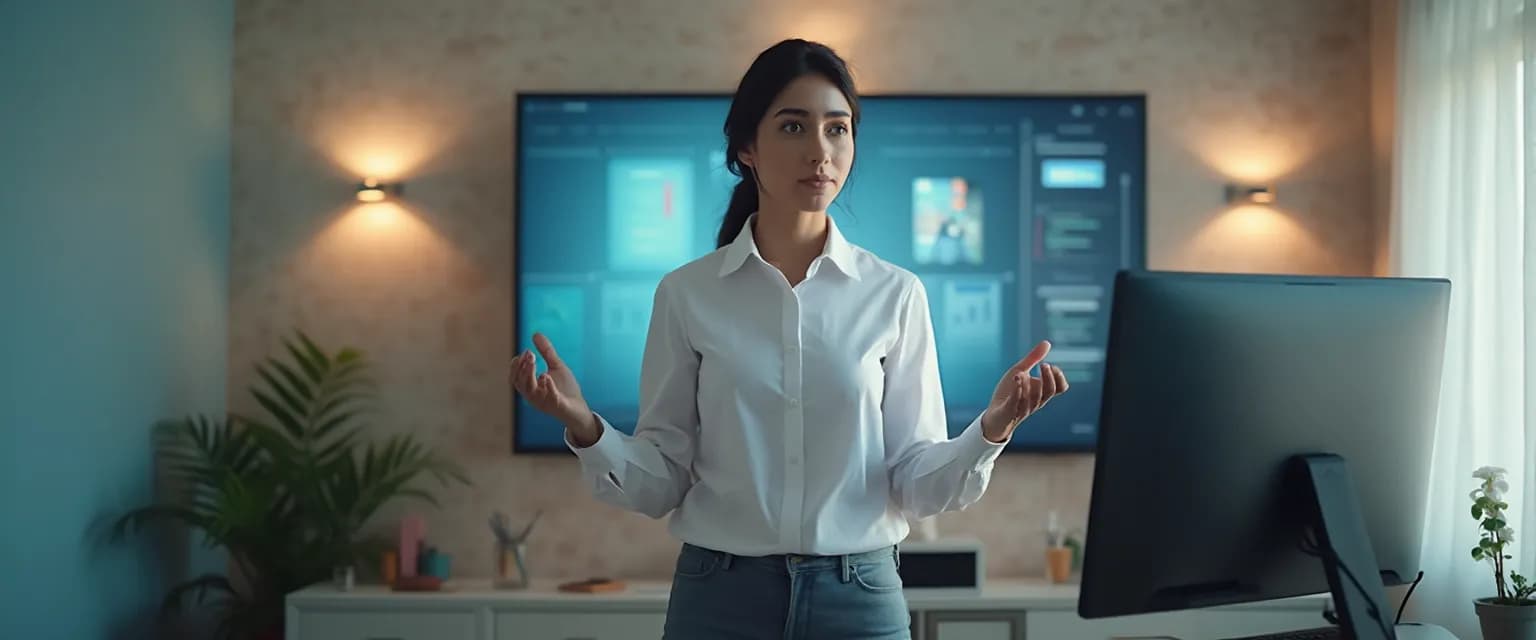Master Your Virtual Stage: 5 Body Language Techniques For Confidence in Virtual Presentations
Ever noticed how your confidence in virtual presentations seems to evaporate the moment you click "Join Meeting"? You're not alone. The virtual stage presents unique challenges that even seasoned presenters find daunting. Your body language—that powerful nonverbal communication tool—translates differently through a webcam than it does in person. What works in a conference room often falls flat on screen, leaving your message diluted and your presence diminished.
Building confidence in virtual presentations requires mastering a specific set of body language techniques designed for the digital environment. The good news? These skills are entirely learnable. With remote and hybrid work becoming permanent fixtures in our professional landscape, developing strong confidence-building strategies for virtual settings isn't just nice to have—it's essential for career advancement.
Let's explore five powerful body language techniques that transform your virtual presence from forgettable to commanding, helping you project confidence in virtual presentations consistently and effectively.
Essential Body Language Techniques for Confidence in Virtual Presentations
Camera Positioning: Your Digital First Impression
The foundation of confidence in virtual presentations starts with proper camera setup. Position your camera at eye level—never below (hello, unflattering chin angles) or too far above. This creates a natural, conversational perspective that mimics in-person interaction. Sit at arm's length from the camera to ensure your upper body is visible, allowing room for natural gestures while maintaining an intimate connection with viewers.
This positioning creates what psychologists call "digital presence"—the sense that you're actually in the room with your audience, which dramatically enhances your perceived authority and confidence.
Strategic Gesture Framing
When it comes to confidence in virtual presentations, your hands matter more than you think. Keep your gestures within the camera frame—about chest to mid-torso height. This "gesture zone" ensures your movements enhance rather than distract from your message.
Make your gestures deliberate and slightly slower than in-person presentations. Research shows that purposeful hand movements increase audience retention by up to 60% and significantly boost your perceived expertise. For maximum impact, use open palm gestures when making key points—they signal honesty and openness, building authentic trust with your audience.
The Digital Handshake: Mastering Camera Eye Contact
Perhaps the most powerful technique for confidence in virtual presentations is consistent eye contact with your camera lens—not your screen. This creates the impression you're looking directly at each audience member, establishing a personal connection that's otherwise difficult to achieve virtually.
Practice the "three-second rule"—maintain camera eye contact for at least three seconds when making important points. This technique creates moments of connection that dramatically increase your perceived confidence and credibility.
For longer presentations, place a small sticky note with a smiley face or eye icon next to your camera as a reminder to look there regularly.
Power Posture, Even When Seated
Your seated posture significantly impacts how confidently you come across. Sit with your lower back against the chair, then lean slightly forward (about 10 degrees) toward the camera. This "engaged posture" signals interest and authority while avoiding the stiffness of perfect posture or the dismissiveness of slouching.
Research in social psychology confirms this slight forward lean increases perceived engagement by nearly 50%. For an instant confidence boost before presenting, try a two-minute "power pose" with arms raised or hands on hips—this reduces cortisol (stress hormone) and increases testosterone, physiologically preparing you for confident delivery.
Facial Expressiveness: Overcoming Digital Flattening
Webcams naturally diminish facial expressions, creating what communication experts call "digital flattening." Combat this by slightly amplifying your facial expressions—about 20% more animated than you would be in person. This ensures your emotions translate effectively through the screen, making your presentation more engaging and authentic.
Elevate Your Confidence in Virtual Presentations with Practice Strategies
Mastering confidence in virtual presentations requires deliberate practice. Start by recording a short practice session and watching it with the sound off—this reveals your body language habits objectively. Notice your posture shifts, eye contact patterns, and gesture frequency.
Create a personalized pre-presentation ritual to center yourself and boost confidence. This might include a quick anxiety-reducing breathing exercise, visualization of successful delivery, or a physical warm-up to release tension.
For meaningful feedback, ask a trusted colleague to observe specifically for these five body language elements rather than general impressions. Targeted feedback accelerates improvement dramatically.
Physical comfort significantly impacts perceived confidence. Ensure your chair supports good posture, wear clothing that makes you feel both professional and comfortable, and arrange your presentation space to minimize distractions that might pull your focus away from maintaining strong body language.
By consistently implementing these specific body language techniques, you'll develop lasting confidence in virtual presentations that distinguishes you professionally. Remember that confidence isn't about perfection—it's about connecting authentically with your audience through intentional nonverbal communication, even across digital distances.




